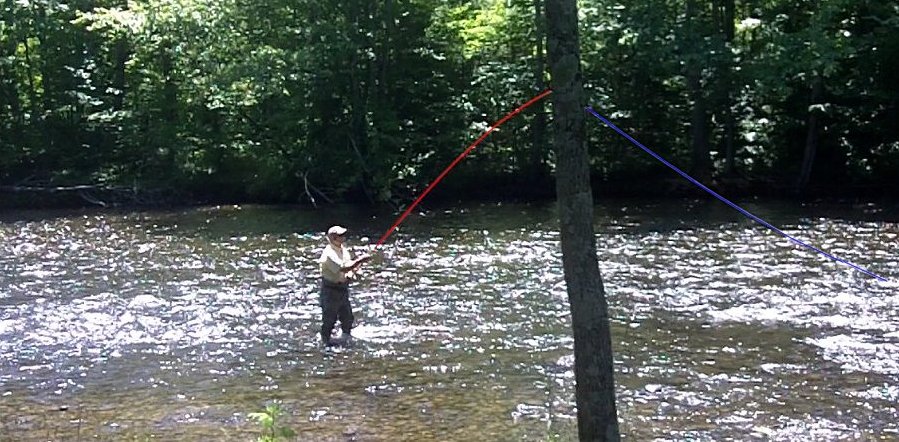
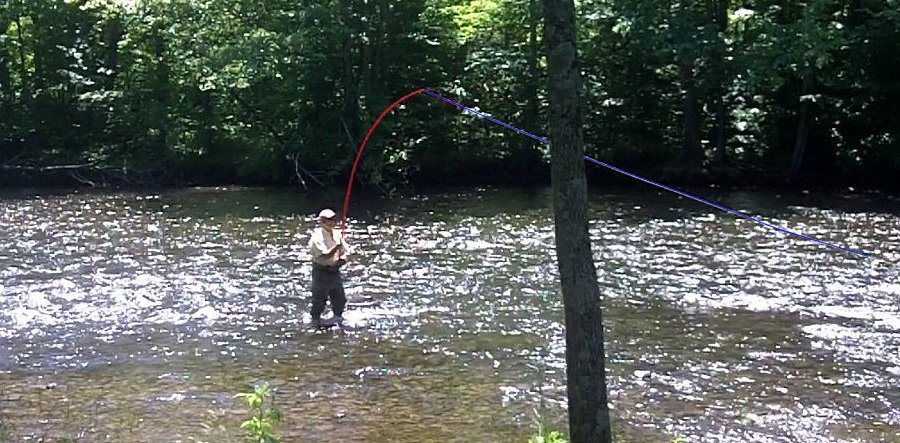
The next step is to start smoothly with the back cast with the rod held at a slight angle towards the near bank. Note the bend in the rod indicating that the rod is being loaded but not excessively. The tip of the rod will describe a smooth arc throughout the back cast.
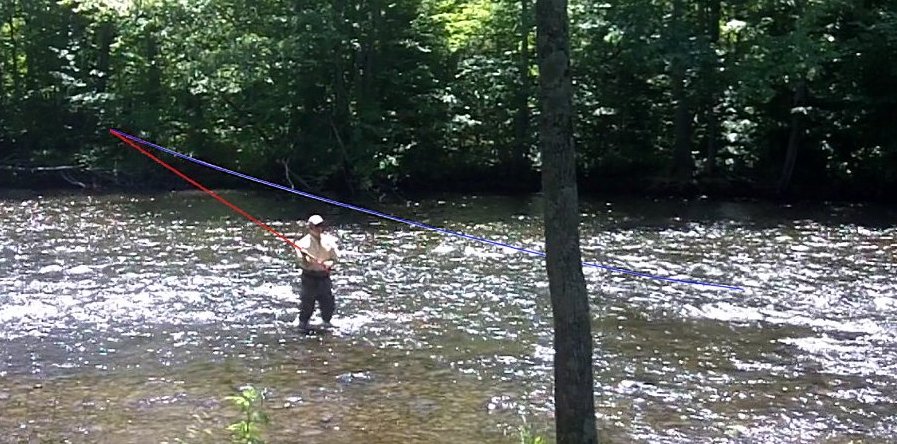
At this point note that the rod is straight indicating that the rod is completely unloaded. It is difficult to see but the rod is pointing behind and to the right of the instructor, towards the near bank. Momentum imparted on the line will carry the line behind and to the right of the instructor.
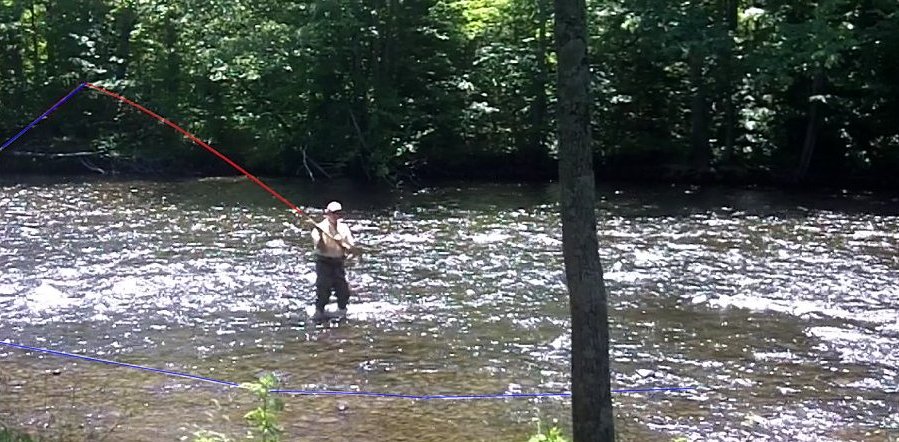
The instructor establishes the anchor before starting the forward cast by hesitating briefly. The anchor is the line laying on the water. Note the distance from the instructor to the anchor which is about 8 or 10 feet. This is a critical part of a Spey cast. The instructor will now begin the forward cast by taking the rod towards the vertical and smoothly accelerating the rod forward, inside and parallel to the anchor. The important word here is smooth acceleration. The rod is moved slowly at first and then increased in speed as the rod approaches vertical.
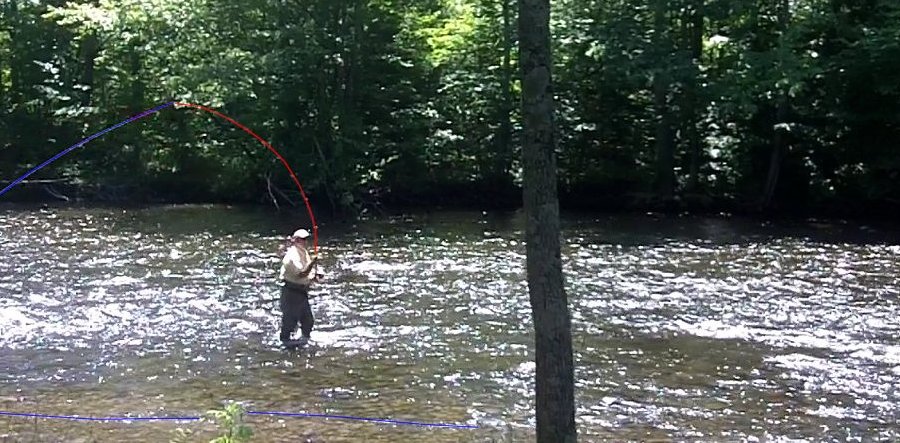
The rod is now fully loaded, imparting maximum momentum to the line. This is the famous "D loop". Note the position of the hands of the instructor with the rod grip in a vertical position.
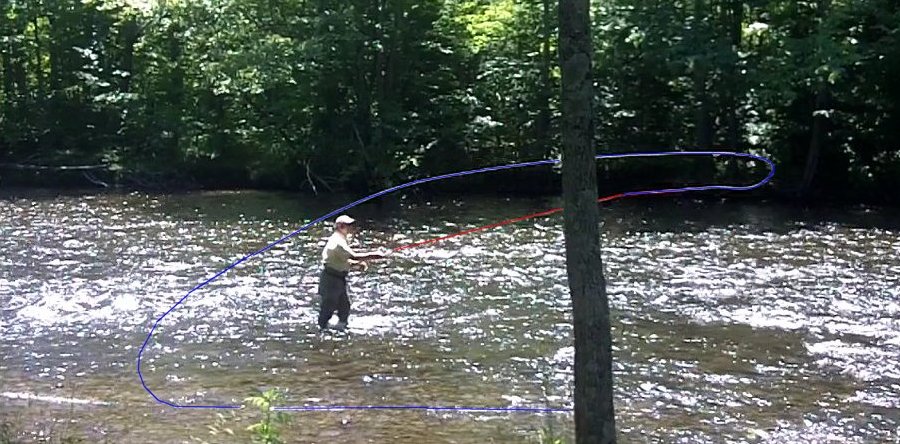
With the rod now unloaded, the momentum given to the line carries it off the water and forward with a nice "tight" loop. The line is released allowing the fly line to pull out not only the rest of the line but the shooting line as well.
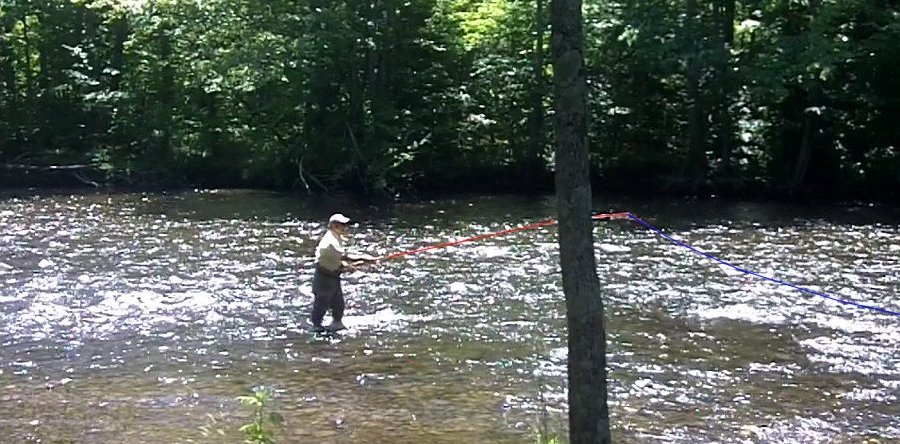
The end of the cast with the rod balanced nicely in the instructor's hands, ready to strike in case of a "take". A nugget of advice from the instructor: in case you are having problem with the cast, try casting with your eyes shut. It's the feel that's important.